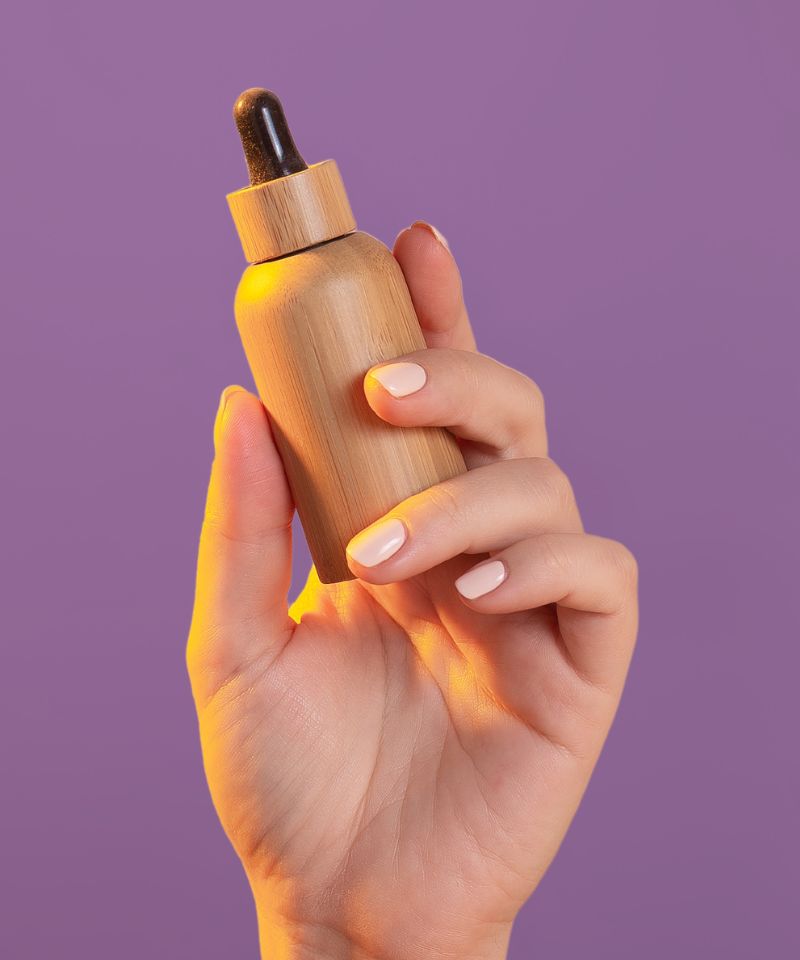In addition to salicylic acid, which is considered the gold standard for acne, several other acids have emerged as strong contenders for treating this inflammatory condition.
Glycolic acid and lactic acid are two of the most popular alpha hydroxy acids (AHAs) lauded for their wide range of skin benefits, but which is the clear skin hero?
In this article, I will compare their properties, discuss their differences, and help you decide whether to choose glycolic acid or lactic acid for acne.

Note: I can show you how to never have acne again. If you have acne and want it to go awayread this message.
What is glycolic acid?
Definition and Properties
Glycolic acid is often called the “gold standard” of AHAs.
It has a low molecular weight, which allows it to penetrate deep into the skin, causing a powerful exfoliating effect.
Derived from fruit sugars and notable for its high acidity, glycolate is a popular ingredient in many over-the-counter and professional skin care products.
Some of the benefits of using glycolic acid include:
The benefits of glycolic acid for acne
Glycolic acid is an effective acne treatment because of its ability to remove dead skin cells, which, when not properly shed, clog pores and contribute to acne formation.
Glycolic acid’s low molecular weight plays a key role in its ability to clear acne, allowing it to penetrate deeper into the skin and into the pores where it dissolves the plug that acne-causing bacteria use as food to survive and grow.
By dissolving these plugs and promoting the shedding of dead skin cells, glycolic acid speeds up cell turnover, leading to clear, healthy skin.
What is Lactic Acid?
Definition and Properties
Lactic acid is often referred to as the “gentle giant” of AHAs.
It has a higher molecular weight than glycolic acid, which results in less intense skin penetration and a more focused effect on the skin’s surface, where it works to dissolve the protein bonds that hold dead skin cells together and promote their natural shedding.
Derived from sour milk and recognized for its less acidic nature than glycolic acid, lactic acid is a common ingredient found in various over-the-counter and professional skin care products.
Lactic acid is also a more suitable choice for sensitive and reactive skin types due to its gentle exfoliating action and gentle nature.
Some of the benefits of using lactic acid include:
- Gently exfoliates dead skin cells.
- Reduces hyperpigmentation.
- Balances skin tone.
- Cleanses skin texture.
- Stimulates collagen production.
- Reduces the appearance of fine lines and wrinkles.
The benefits of lactic acid for acne
While lactic acid can effectively remove dead skin cells on the surface, thereby preventing the build-up of dead skin cells and oiliness, it may not provide the desired results for deeper skin problems such as acne.
Unlike glycolic acid, which can penetrate deeper into the skin and dissolve the plugs that acne-causing bacteria use to survive and multiply, lactic acid’s effects are more superficial and indirect.
Lactic acid promotes the cell renewal process, leading to a smoother and healthier skin surface. However, it won’t directly attack the environment in which acne-causing bacteria prefer to live.
Additionally, lactic acid may be a safer option for dark skin and acne.
While all AHAs have the potential to cause hyperpigmentation if misused, the risk is lower with lactic acid due to its milder nature.
So while it may not be as powerful an acne treatment as glycolic acid, lactic acid offers a balance of effectiveness and safety, particularly for those with darker skin tones and sensitive skin who cannot tolerate stronger acids.
Comparison of Glycolic and Lactic Acid


Effectiveness in the treatment of acne
Glycolic acid’s ability to penetrate deep into pores gives it an advantage in fighting stubborn acne, especially for those with more resistant skin.
Its action can, however, lead to a temporary worsening of acne – a telltale sign that the acid is clearing your pores of impurities.
Lactic acid, being milder, is more suitable for people with sensitive skin, providing a more gradual and indirect but constant improvement.
Side effects and potential risks
With great power comes greater responsibility.
Glycolic acid, when used too strongly or too often, can cause irritation, redness, and even burning.
Lactic acid, in its milder approach, is much less aggressive on the skin, making it less likely to cause unwanted breakouts.
However, since both ingredients are peeling acids, here are some possible side effects that can occur with excessive use:
- Dryness.
- Redness and irritation.
- Flaking or flaking.
- Sensitivity to sunlight.
Best Practices for Using Glycolic and Lactic acid in your skincare routine
Both glycolic and lactic acid are best used as part of a consistent, daily skincare routine.
Incorporating one or both of these AHAs into your regimen will lead to healthier skin and a reduced incidence of acne.
However, when using these strong acids, it is important to remember:
- Start slowly by introducing an acid into your routine.
- Use a pea-sized amount of product to create a thin layer of coverage and not overwhelm the skin.
- Exfoliate no more than 1-2 times a week while your skin adjusts to the active ingredient.
- Moisturize well after exfoliating to prevent dryness and skin barrier.
- Apply sunscreen daily, as AHAs can increase your skin’s sensitivity to UV rays.
- Listen to your skin and adjust use accordingly if you experience irritation or sensitivity.
Skin types and suitability
Glycolic acid is aimed at a wider audience of skin types, except for the most sensitive and reactive skin.
Its exfoliating power is best suited for those with oily and combination skin, making it an ideal choice for treating acne.
Lactic acid, on the other hand, can help sensitive, blemish-prone skin, providing consistent results over time without causing adverse effects.
Glycolic Acid vs. Lactic Acid for Acne Treatment: Which is Better?


Although the answer to this is not clear when compared side by side, it is easier to see that:
Glycolic acid it is more suitable for those with oily and combination skin looking for faster results.
Lactic acid it’s a safer option for sensitive and reactive skin, as well as those concerned about the risk of hyperpigmentation.
Glycolic, being stronger, can provide faster and more drastic results, while lactate offers a gentler, more gradual approach to acne treatment.
But acne is individual, and so is your skin, so your best bet is to consider your current skin condition when choosing between these two AHAs.
Ultimately, your choice should depend on your skin’s individual needs and how it responds to each acid.


My name is Simone and I am a board certified dermatologist. I created this site to teach my readers how to take great care of their skin and I also like to occasionally share my honest opinions on skin care products I’ve tried. You can learn more about me here.
The Acne Solution: Your Ultimate Guide to Flawless Skin


An extensive, no-nonsense course it shows you how to never get acne againby a licensed Esthetician specializing in oily/acne-prone skin;.
